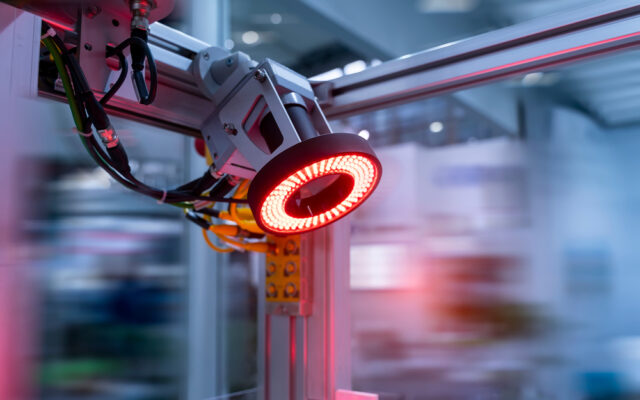
Cameras for computer vision: review and selection criteria
Computer vision (CV) is increasingly taking a position in the video surveillance market. This activity is justified because video monitoring systems with computer vision cameras are more accurate in their functionality. They greatly facilitate the process of surveillance and analytics. For smooth operation and elimination of false alarms, it is important to give CV a smart working algorithm and an appropriate camera. Let’s talk about that.
Computer vision in household use. Principle of operation
Computer vision extracts the necessary information from the received image. In other words, the video camera identifies a picture, such as a face, and focuses on it before taking the picture.
In particular, the technology is actively used for face recognition in smartphone security. But computer vision is handy not only for common selfies.
A CV and wireless surveillance camera will come in handy at home, at manufacturing facilities, offices,s, and in public places. CV will successfully recognize and analyze text, faces, vehicle movement and license plates, and more.
1D, 2D, and 3D cameras – what are they?
The 1D camera uses a linear scan of the subject and creates a very long image. They are used on a conveyor belt. These cameras capture the subject in motion, and the picture stays sharp.
The 2D camera is more familiar to us and is used more often than other types. It generates a picture in height and width.
The 3D camera is used when you want to analyze an object by its shape or position in three-dimensional space. These cameras use a single position shift lens or multiple lenses to record a number of viewpoints.
2 types of cameras (analog, and digital)
Types of cameras differ in the way they process information and the way they transmit video. There are two types of cameras: analog and digital.
Analog CCTV cameras provide a picture from an analog matrix. Then it is digitized, processed, and transmitted as an analog signal. The video recorder digitizes, encodes, and compresses it for recording.
Digital CCTV cameras differ from analog cameras in that the signal goes to the DVR digitized. Depending on the camera (IP or HD-SDI) the signal may or may not be encoded and compressed. Digital cameras perform a wider range of tasks, are easier to upgrade, but are more expensive. The price is well worth it, though.
NOTE: Read the article “Top 6 errors when switching from analog to digital surveillance“
Machine vision cameras
Among others, there is a machine vision camera. The images from this camera have high resolution and are not compressed before being sent to the computer. The image has excellent quality and detail.
Machine vision cameras are used in places where all details are important: medicine and automated manufacturing.
Matrix
Matrix types, CCD and CMOS, have different algorithms, and devices and are used for different tasks. Therefore, before selecting a matrix, you should decide on the required functionality: whether IR vision, low noise, and light sensitivity are needed.
The size of the matrix and its pixel are also important when choosing a camera. The bigger these parameters, the better light sensitivity, signal-to-noise ratio, and resolution. And this, in turn, affects the detail of the picture.
All the details about matrices in monitoring systems are here.
Focal length
The distance between the matrix and the lens is the focal distance. Focus shows the range and width of vision of the camera. Accordingly, greater focus gives more detail to view the monitored object.
Lens.
Lenses have quite a few different types. They depend on the focus and differ in the viewing angle. Panoramic cameras with a 360-degree viewing angle are called “fisheye”.
The aperture – a hole in the lens in front of the lens – will help you make a good image in low light. In such conditions the aperture will be opened to the maximum, and the aperture is fixed at a small value.
The electronic shutter is responsible for the matrix sensitivity to light. Manual speed control is the best option.
Resolution.
The resolution of the camera is responsible for the size of the picture. A high resolution gives better image detail. When choosing a video camera, you should pay attention to the indicator “effective pixels”. It creates the picture in the end.
Conclusion.
Choose a video camera carefully. Clearly define its task list. Its characteristics significantly influence the successful use of computer vision.














